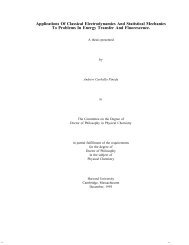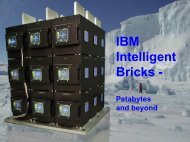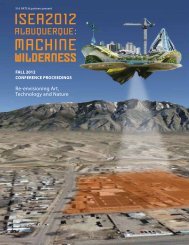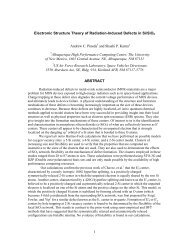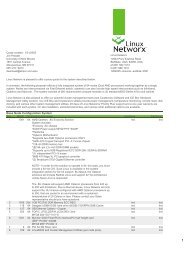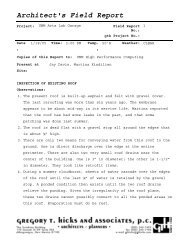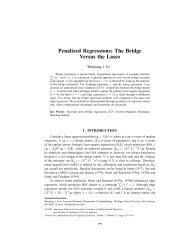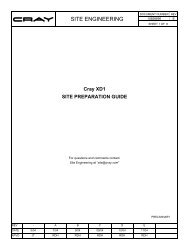Dense Matrix Algorithms -- Chapter 8 Introduction
Dense Matrix Algorithms -- Chapter 8 Introduction
Dense Matrix Algorithms -- Chapter 8 Introduction
Create successful ePaper yourself
Turn your PDF publications into a flip-book with our unique Google optimized e-Paper software.
7<br />
Determining The Cost-Optimal<br />
Constraint on p<br />
• We now have two expressions for W<br />
coming from the requirement for cost<br />
optimality<br />
• Setting them equal, p log 2 p = O(n 2 )<br />
• Now we need to derive an expression for p in terms<br />
of n to determine the upper bound on p in terms of n<br />
• Takes the log on both side, solve for log p and<br />
substitute back into the above equation gives:<br />
⎛<br />
⎜<br />
n<br />
p = O<br />
⎝ log<br />
2<br />
2<br />
⎞<br />
⎟<br />
n<br />
⎠<br />
5/6/2003 densematrix 13<br />
Comparison: 1-D Versus 2-D<br />
• Runtime:<br />
• 1-D: n 2 /p + t s log p + t w n<br />
• 2-D: n 2 /p + t s log p + t w n/√p log p<br />
– The 2-D partition is faster -- smaller t w term<br />
• Isoefficiency (the growth in the work to keep the<br />
efficient fixed):<br />
• 1-D: Θ(p 2 )<br />
• 2-D: Θ(p log 2 p)<br />
– The 2-D partition is more scalable<br />
» That is, the efficiency can be maintained with fewer<br />
processors (or on a wider range of processors)<br />
5/6/2003 densematrix 14




